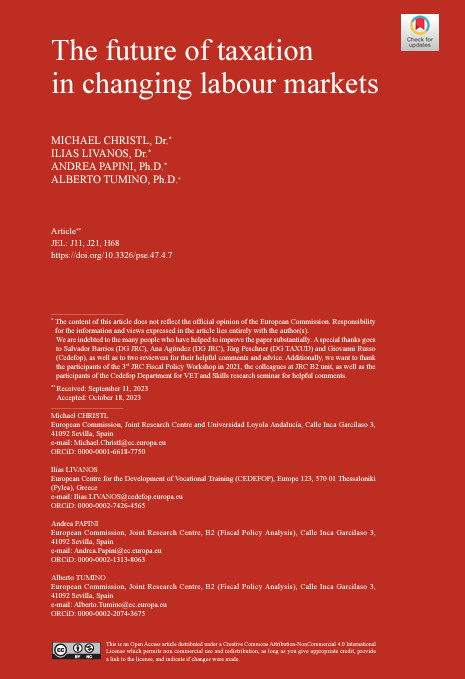The future of taxation in changing labour markets
DOI:
https://doi.org/10.3326/pse.47.4.7Keywords:
income distribution, budget, deficit, job polarisation, population ageing, COVID-19Abstract
This paper provides a first assessment of the fiscal and distributional consequences of the ongoing structural changes in the labour markets of EU member states, mostly driven by technological progress and ageing. The Cedefop 2020 Skills forecast (including the effects of COVID-19), population projections and the forecast on pension expenditures depict a scenario of an ageing population, an inverted U-shaped unemployment trend and potentially polarising labour markets in the EU till 2030, the latter mostly driven by a surge in high-skill occupations. We make use of the microsimulation model EUROMOD and reweighting techniques to analyse the fiscal and distributional impacts of these trends under a no-policy-change assumption. The results suggest that the macro trends will increase pressure on government budgets, however, we also show that the current tax-benefit systems have the capacity to counterbalance the increases in income inequality and poverty risks triggered by the expected future labour markets developments.

Downloads
Published
How to Cite
Issue
Section
License
Copyright (c) 2023 Michael Christl, Ilias Livanos, Andrea Papini, Alberto Tumino

This work is licensed under a Creative Commons Attribution-NonCommercial 4.0 International License.








